Elden Ring Nightreign requires you to play a From Software game the wrong way. It asks players to prioritize aggression over stoicism; encourages almost reckless speed over careful strategy; and casts aside meticulous exploration for smash-and-grab expeditions.
In most From Software games, haste means failure and frustration, where lessons aren’t learned and progress is stymied. Nightreign, however, isn’t most From Software games. Perhaps, then, it’s more accurate to say Elden Ring Nightreign wants you to play a From Software game in an unconventional way.
While director Junya Ishizaki has expressed a fondness for multiplayer games, on paper, Nightreign seems more like a product of multiplayer trends. It’s a game in which a squad of three drops into a landmass and fights for survival as a circular wall of energy closes in. Although they’re not usually as PvE focused, games with a very similar premise are a dime a dozen, and in the shadow of the genre’s titans, very few of them have been able to survive, let alone thrive.
But, after playing it for a handful of hours, I can say with confidence that Nightreign isn’t From Software chasing a trend. Instead, it feels like its inspirations are taken more genuinely, with the goal of reinterpreting multiplayer experiences that its developers have a fondness for in ways that align with From Software’s design principles and objectives.
In many ways, Nightreign is a game of subversions and, as a longtime Elden Ring player, I felt the impact of them the moment I landed in Limveld, an alternate version of Limgrave. First of all, I was joined by two other players. As someone that comes to From’s games for the feeling of isolation, and to be a lone wanderer in a strange and dangerous land, that took some getting used to.
The biggest shock to my system, however, was how fleetfooted my character felt. Chosen Undeads, Bearers of the Curse, Good Hunters, and Lowly Tarnished have a weight to their movement that almost feels lumbering, even at a sprint. There’s a slow pace that wordlessly tells the player to be deliberate and have awareness of what’s around or could be lurking ahead.
In Nightreign, however, that economic movement is thrown out for expedience. Regardless of which Nightfarer I picked, I felt like I was on skates, zipping around with a momentum that is much more reminiscent of Sekiro’s Wolf. My character, Duchess, also exhibited a few other skills that wouldn’t be out of the ordinary for a shinobi of Ashina.
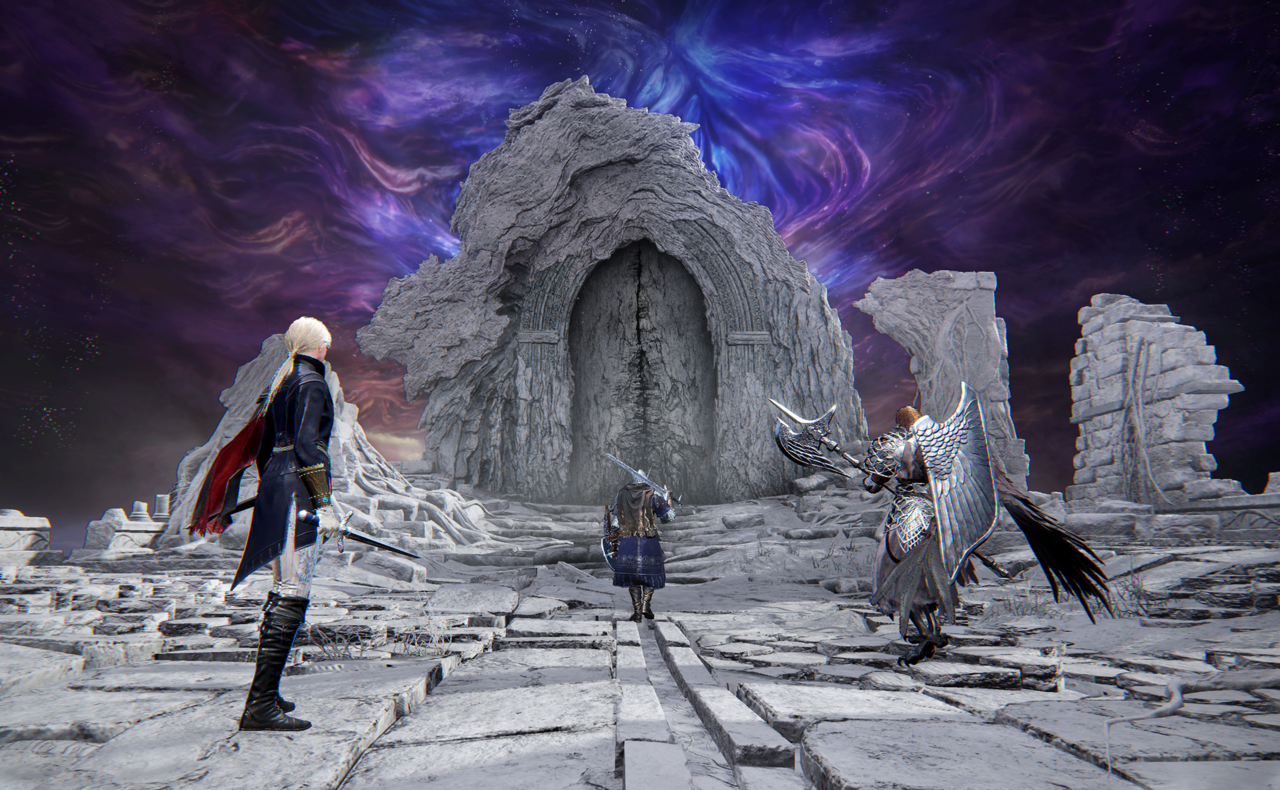
Like in Elden Ring, jumping is assigned to a face button, but now players can essentially wall-kick to reach higher terrain. The geometry is fairly forgiving in terms of whether you actually have support under your feet to allow scurrying up the side of a steep cliffside, so I was surprised at how easily I could get about. Additionally, clicking in the thumbstick during a sprint propels the character into an even faster sprint. Since you’re basically running as fast as Torrent would have moved, this super-sprint is effectively why the spectral steed has been removed. Couple that with Spiritspring Jumps–launch pads for players to soar up to higher locations–ethereal eagles that will carry players from point-to-point across the map, and the absence of fall damage, and everything about the way my Nightfarer moved told me that taking my time and pre-empting threats was a bad idea. Instead, speed was paramount and I’d need to rely on instinct to overcome threats. Obviously, the big wall of blue fire closing in was also a good indication of that.
A complete run lasts around 30 minutes, with the in-game passage of time segmented into three days. The goal in each of these days is to explore Limveld… quickly. Kill any enemies that you may come across to accrue currency… quickly. And, on the way, grab weapons and trinkets… quickly.
By the time the Night’s Tide has closed in and encircled the squad completely, the hope is that everyone has the means to bring down the boss that appears and progress to the next day. This process repeats until the end of the third day, when the Night Lord appears for the final confrontation. It’s a simple gameplay loop that is interesting for the way it distills and condenses the essential elements of an RPG–and a From Software game–so it can be experienced in short stints.
Each run I did had exploration, challenging combat, character development, and worldbuilding, except in double-time, like I was playing Elden Ring on fast-forward. Numerous tweaks have been made to familiar systems to ensure that sense of momentum isn’t compromised. Sites of Grace, for example, are all marked on the map and will automatically activate when any player is close by–when a ring of fire is closing in, there’s no time for bonfire lit, bonfire sit.
Leveling up has also been streamlined, to the point where it’s a one-button-press process. When you have enough runes and are at a Site of Grace, you simply hit level up and the game takes care of the rest, boosting the attributes that are most important for the character archetype you’re playing as. It definitely takes the nuance out of developing a character by tweaking attributes, but equipment and loadouts pick up the slack.
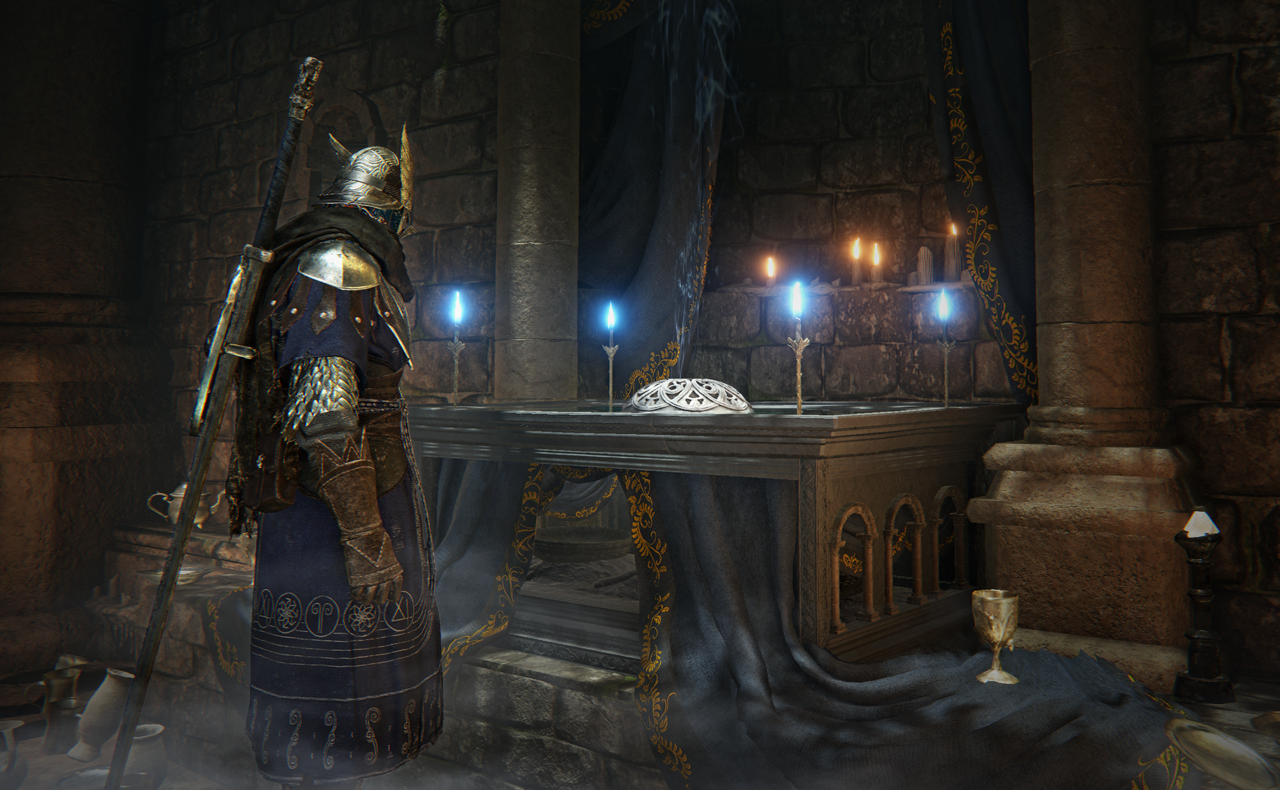
There is no class restriction for weapons, so anyone can use anything, though there is a natural inclination towards certain fields over others. Duchess, for example, felt more like a dexterity-oriented character, so I always opted to seek out weapons that gave me quick strikes or the ability to overwhelm and stagger enemies. The Guardian, meanwhile, begins with a halberd, so I felt more inclined to find similar weapons that would let me strike from a distance or sweep the battlefield to control mobs. Wylder felt like a safe middle ground that could work with most swords, so I opted for greatswords, but wasn’t shy about dropping that for a katana or straight sword.
Since the cost of a level progressively increases, there’s a natural push towards undertaking the more high-risk and high-reward escapades, which is usually conducive to leveling up quicker and/or finding items that are more powerful. On my first run, my squad stumbled into ruins that, unexpectedly, turned out to be crawling with Wormfaces, who immediately began spewing enough Death Blight to incapacitate me. Those particular ruins were ones we opted to avoid, for now. But now we knew where some higher level enemies could be found, should we need to stock up on runes.
Even though most of the weapons are carryovers from Elden Ring, there is still the excitement of finding something better thanks to the randomization at play. In our build of the game, much of the world was static. In the full experience, however, there is a fair amount of randomization that From Software hopes will keep runs fresh. While the geography of the land remains the same from run to run, the placement of key locations and points of interest are randomized, as are the locations of items and enemies, including the bosses you may have to face. There are also in-game world events that can appear unexpectedly. Ishizaki-san has previously mentioned that a volcano could emerge somewhere on the map, or a meteor could strike Limveld. I’m imagining it as something like the shooting star that crashes into Limgrave after defeating Radhan in Elden Ring, but since I didn’t get to experience it firsthand, I’m not sure if the change to the world it results in will be quite as drastic.
Although initially skeptical of how it would all play out, after a few runs of fumbling around and figuring things out, my squad and I settled into a groove. As soon as we landed, we’d hit up the nearest mob of enemies–usually low level–and grab enough runes to bolt to a nearby Site of Grace and level up. From there, it was a case of checking the map and figuring out what our best strategy was, based on the information we could glean. Churches were always a good option, since they have extra flask charges, but we’d often take quick detours into ruins–both over and underground–to grab equipment. We’d target areas where we thought mini-bosses were available to get loot more specifically catered to us, or spot the blackish mark on the map that signals an invasion point. These yielded much better drops, but only after defeating a few waves of the giant ants.
In a rather smart design choice, From Software has made everything useful, regardless of whether it is actively in use. Almost every item has passive buffs that will take effect as long as you have it in one of your equipment slots. So, in my case, although I was using a Rogier’s Rapier and intended to stick with it, I’d still equip a greatsword or claws or even a staff because its buffs were useful. This meant that pretty much everywhere we went offered a high chance of finding something I could use, so there was a consistent drip feed of that satisfaction of discovering something new and shiny to use that is core to RPGs. The only real prerequisite you need to be mindful of is level requirements.
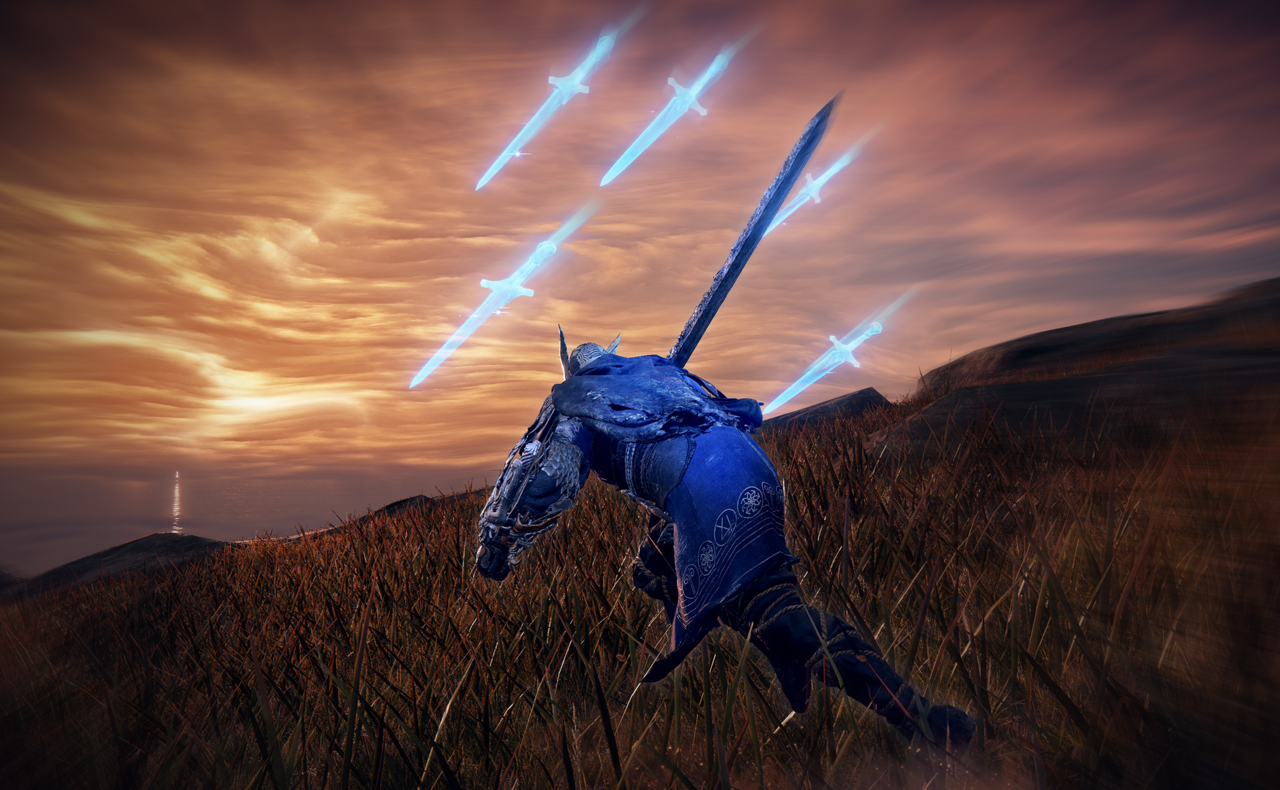

The decision to keep the topography of Limveld the same, but randomize pretty much everything else, has me of two minds. On the one hand, it would have been really cool to have a Caelid map or a Mountaintop of the Giants map, but at the same time, I came to recognize how important it was to have a consistent and predictable landmass that the player can build confidence within. After a few runs, we no longer needed to spend time getting a lay of the land, and instead could focus on just plotting a path to quickly bring a strategy to fruition. That familiarity is what built confidence, both with the space we were playing within and the various systems and tools available for us to utilize.
That is how we learned to play our characters well and, more importantly, develop synergy. As previously mentioned, I mained Duchess while my squadmates, Kinda Funny’s Andy Cortez and GameSpot’s Lucy James, played as Wylder and Guardian respectively. What initially began with us just surrounding and wailing on enemies eventually became well-timed activations of special abilities to deal big damage and smart uses of skills to support each other. In one encounter, Lucy used her Guardian’s Wings of Salvation, an ultimate that has the weird eagle man leap high into the air and then come crashing down with a divebomb that killed off a few enemies and made it easier for her and Andy to revive me… by attacking me. Yes, in Nightreign getting your compatriots back on their feet requires you to deal damage to their struggling body. It’s very strange but, surprisingly, adds a layer of extra strategy to battles.
In the middle of a fight against the Centipede Demon–the boss of day one–two of us had to work together to draw aggro away from the downed squadmember, then have one of us peel off to go and smack some life back into our ally. At one point, I opted to keep a halberd on me purely for revivals, since I could use the sweeping attack from a distance to speed things up and, in the event that someone is downed near a boss or in the middle of a mob, I could do damage to them while also bringing a friendly back.
The Wylder’s Claw Shot ability functions like a grappling hook of sorts and can be used to pull enemies closer or away from others. In one instance, I used it to bring a downed ally closer to me for a safer attempt at issuing aid. Wylder’s ultimate, however, was far more destructive. Once it’s ready to go, Wylder executes a big, explosive attack that deals a lot of damage–fantastic against bosses that have bigger pools of health. However, when paired with Duchess, it becomes a game-changer. Duchess’s Restage, when activated, will repeat the damage of the last attack, which means combining it with Wylder’s ultimate would take chunks out of health bars. She also has the ability to make the party invisible for a brief period of time, which is a great way to set up multiple charged heavy attacks that can then be repeated.
The Recluse was also available to play but, admittedly, I didn’t spend too much time with her, owing to the fact that she is much trickier to play without a good amount of experience, and was also very squishy, so one wrong move and it was over. She is a really interesting character, nevertheless. Effectively a mage of sorts, the Recluse relies heavily on FP since she primarily casts spells from a distance. FP is hard to come by–sometimes you can restore it using items in the environment, but more often than not the best tactic is to constantly move to Sites of Grace or stay near them. Her abilities involve siphoning magic from the environment, be that a player or an enemy, and storing three charges that are combined for a new attack. I wasn’t able to get a good handle of it, but at one point I extracted flame magic from an enemy that was on fire, poison from a teammates attack, and what I believe was just a generic non-elemental spell from another enemy, and combined it to unleash a powerful cocktail spell.
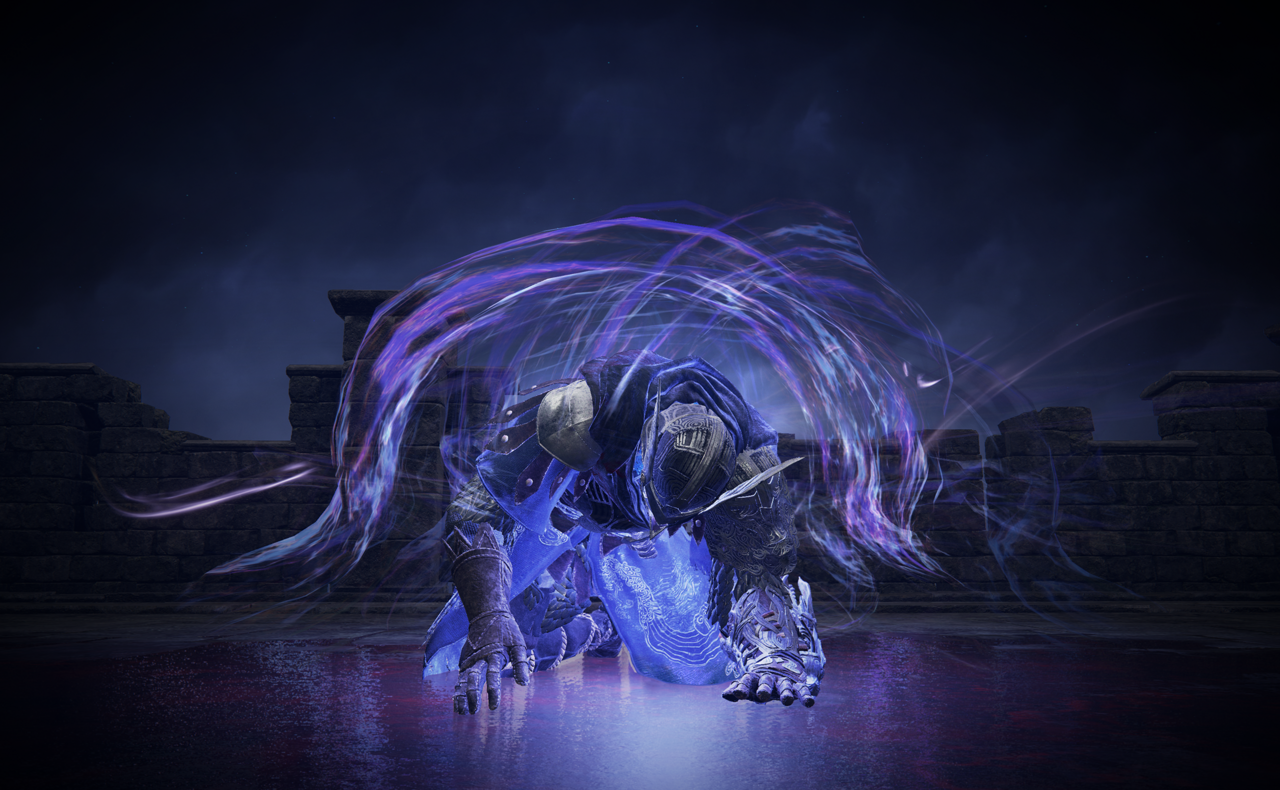

More immediately useful, however, was the Recluse’s ultimate, which paints a target with a sigil. For as long as that was in place, any time we attacked the enemy it would restore health, so she can serve the function of a healer too. Again, admittedly, I had no idea what I was doing as her and given the time pressure I opted to play the less-complex characters to get a better grasp of the game. I am very much looking forward to digging into the Recluse’s skillset when the game is out though.
There’s plenty of other things going on in Elden Ring Nightreign: relics that carry over between runs and can be activated in Roundtable Hold for extra buffs; characters that are hanging around hinting at an underlying story; the world events that we’re yet to see; and, of course, enemies being pulled from the world of Dark Souls into Elden Ring, which we need an explanation for.
It’s safe to say that the team is doing plenty to put its own spin on what initially may seem like a familiar template. What’s hard to convey without actually playing is how this familiar format has been adapted to not only incorporate the touchstones of From Software games, but also inspire the same soaring highs and crushing lows typical of the studio.
With enough experience–and confidence–runs through Dark Souls, Bloodborne, Sekiro, or Elden Ring can be optimized to the point where, depending on your objective, there are set paths to travel, key items to acquire, and specific weapons to develop. This is how speedrunners play those games, and Nightreign feels very much like a game at least partially inspired by and for that community. Although the few hours I played began with discomfort and frustration, by the time I was done I had experienced the satisfaction of exploration and character growth, but, more importantly, I learned from my mistakes and started to understand how the game is meant to be played, overcoming unlikely odds. In that respect, Nightreign looks to be very much a From Software game, and I’m more intrigued by it now than I was before getting some time with it.
For more, check out our Elden Ring Nightreign interview. Nightreign releases on May 30.


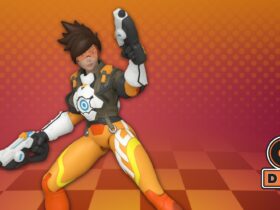



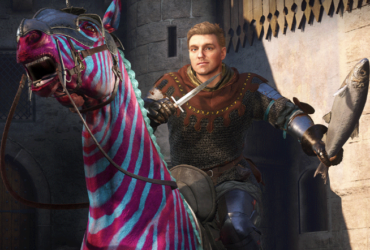
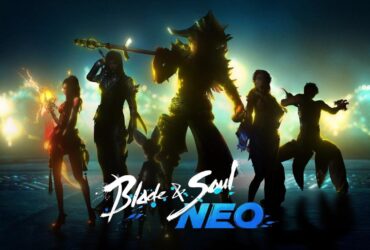



![South of Midnight Preview [Capsule Computers]](https://esportvoice.com/wp-content/uploads/2025/02/South-of-Midnight-Preview-Capsule-Computers-370x250.jpeg)
Leave a Reply